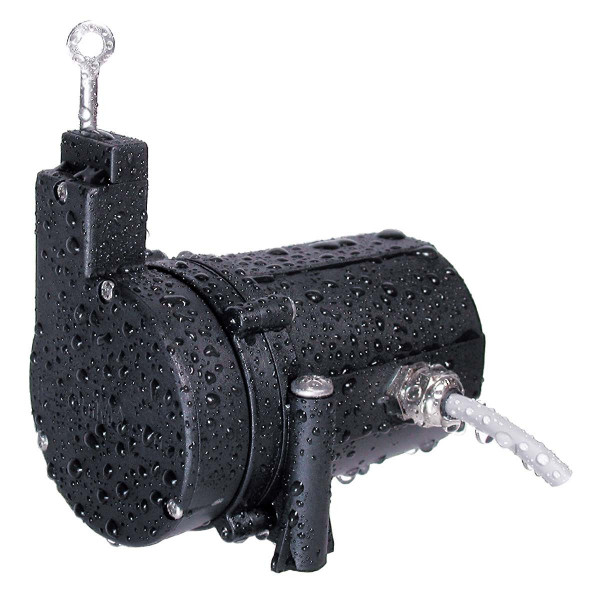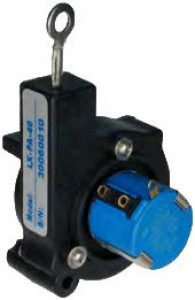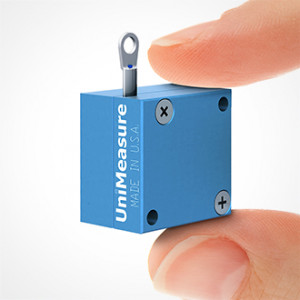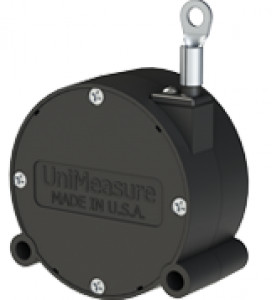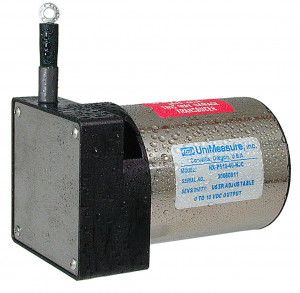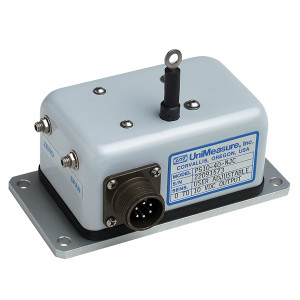Cases of application
In the context of product validation, position or linear displacement measurement is very often required. While many displacement transducers provide extremely accurate and repeatable measurement, even under extreme conditions (inductive, LVDT, Eddy Current, etc.), in many situations, the expectation is to have a much simpler to implement, more cost effective, and robust solution.
Technology
This is precisely where the cable (or wire) displacement sensor comes into its own.
How it works - Wire Sensor](https://www.pm-instrumentation.com/storage/4059/HOW-THEY-WORK.png)
The sensor contains a cable wound around a spool, the end of which is attached to the element whose displacement is to be measured. The elongation of the cable is converted into an electrical signal (current, voltage, potentiometric, impulse) directly proportional to the displacement. The conversion is done by Hall effect, without contact, allowing a very high number of cycles to be reached. The cable is directly or indirectly linked to the displacement to be measured, which allows a non-normal or non-linear displacement. The measurement can be offset by cable extensions. The sensor body and the cable can be attached to the fixed or moving part of the measurement.
The benefits
- Extremely fast and cost-effective installation and commissioning
- Long service life
- Wide range of measuring ranges: from a few mm to 50 metres
- Many configuration possibilities: cable type, hanging, output signal, waterproof versions, fixing kits, etc.
Selection Guide
| Features | Serie ZX | Série FX | Série LX | Série JX | Série STANDARD | Série HX |
|---|---|---|---|---|---|---|
| Type of measure | linear displacement | linear displacement | linear displacement | linear displacement | linear displacement Linear speed | linear displacement Linear speed |
| Housing | Aluminium | Thermo-plastique | Thermo-plastique | Thermo-plastique | Aluminium | Aluminium Acier inox Thermo-plastique |
| Protection class | IP 40 | IP 52 (IP 65 en option) | IP 40 | IP 52 (IP 65 en option) | IP 40 (IP 50 en option) | IP 65 (IP 68 en option) |
| Linéarité (sortie analogique) | +/- 1% PE | +/- 1% PE | +/- 0,25% à 1% PE selon étendue de mesure | +/- 0,25% à 1% PE selon étendue de mesure | +/- 0,1% à 0,25 % PE selon étendue de mesure | +/- 0,1% à 0,25 % PE selon étendue de mesure |
| Linéarité (sortie impulsionnelle) | +/- 0,1% de la PE | +/- 0,1% de la PE | +/- 0,033% de la PE | +/- 0,033% de la PE | ||
| Etendues de mesure | 38 mm | 50mm à 1,25m | 50mm à 1,25m | 50mm à 2m | 50mm à 2m | 50mm à 50m |
| Types de sortie disponibles | ||||||
| A - Pont diviseur de tension | X | X | X | X | X | |
| B - Pont | X | X | ||||
| 420 - 4-20 mA | X | X | X | |||
| 510 - 0-10 VDC ou +/-10VDC | X | X | X | |||
| EP - TTL | X | X | X | X | ||
| HM - Tension | X | X | ||||
| V - Sortie Vitesse | X | X | ||||
| VP - Sortie Vitesse et Position | X | X |
Applications
This sensor technology is aimed at any industry in the automotive, aeronautical, mechanical, production or railway sectors.
| Sector | Application |
|---|---|
| Automotive Suspension travel Crash test Brake pedal travel Clutch position | |
| Aerospace | Wing deflection measurement |
| Oil & Gas | Valve opening Liquid level |
| Production | Plastic injection |

